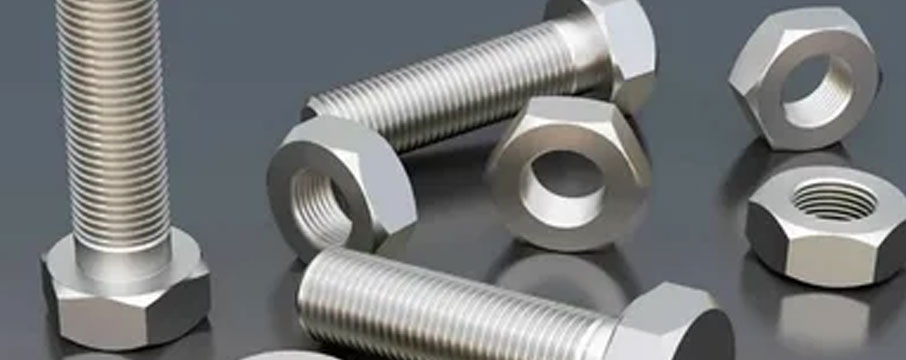
What Is The Difference Between 300 And 400 Series Stainless Steel
Austenitic stainless steels with non-magnetic characteristics make up the 300 series. In their composition, they contain 17 to 19 percent chromium, 8 to 10 percent nickel, manganese, carbon, sulphur, phosphorus, and silicon. One of the most often utilised types of steels are these corrosion-resistant stainless steels. The different grades are 302, 304, and 316. The most popular stainless steel is 304, and the second most popular is 316, both of which are utilised in a variety of applications. Ferritic stainless steels in the 400 series include 11 percent chromium, as well as lower amounts of sulphur, phosphorus, manganese, and other metals. Nickel is present in some materials only in trace amounts. Compared to the 300 series, they have weak corrosion resistance, but excellent abrasion resistance.
The 400 series of stainless steels is less expensive than the 300 series because the nickel concentration is lower. Applications requiring corrosion resistance are utilised the 300 series, while those requiring high wear and tear resistance are used the 400 series. The 300 series, however, is the most popular because to the fact that most applications prioritise corrosion resistance over wear and tear capabilities.
While the 400 series' chromium component offers some corrosion resistance, it does not fare well against steam, running water, chlorides, oxidising agents, or reducing agents. The 300 series, however, offers superior strength and corrosion resistance against the majority of these corrosive substances. Some grades, such grade 316, have greater corrosion resistance against particular agents like the chloride ion. Consequently, the 300 series of products are utilised in maritime, oil and gas, petroleum, petrochemical, oil and gas, and other applications where the products pose a risk of corrosion. The 400 series is utilised in applications where wear and tear are high but corrosion resistance is not the main issue, including transportation, platforms, handrails, and other sections of automobiles.
When compared to the 400 series, the 300 series is better for welding. When being welded, the 400 series can bend and crack. Both of these materials can be joined using the majority of conventional techniques, but the 300 series could be joined without harming the material. The 300 series' 304 grade sheet metal is frequently used to join the 400 series, which is prone to cracking, in order to create a more fluid weld puddle and provide better gap bridging.
| VALUES COMPARISON CHART | DUPLEX STEEL | SS 304L AND 316L | SS 410 AND 416 |
|---|---|---|---|
| CORROSION RESISTANCE | Excellent | Good | Moderate |
| MACHINABILITY | Excellent | Poor/Gummy – will not hold bright finish | Good |
| WELDABILITY OF STEEL | Excellent | Good | Moderate¹ |
| SOUR SERVICE (SS) ENVIRONMENTS | Excellent | Poor | Acceptable |
| STRENGTH OF STEEL | Excellent | Poor / Not hardenable by heat treatment | Good |
| ANTI-GALLING | Good | Poor / Parts can seize and gall | Moderate / Parts can seize |
| WEAR RESISTANCE | Excellent | Moderate | Good/Further hardening diminishes |
| MAGNETIC | Yes | No | Yes |
| SHOCK RESISTANCE | Excellent | Excellent | Good |
| RETAINED STRESS | Less retained stress | Poor / High degree of memory | Moderate / High degree of memory |
| LONG LENGTHS AVAILABLE | Yes | No | Yes |
| FINISH OPTIONS | TGP Bearing-Fit, RTOS | Centerless TGP, Cold Drawn | Hot Roll, TGP |
| YIELD STRESS (TYP) | 65,000 PSI minimum | 304L = 25,000 PSI 316L = 30,000 PSI |
410 = 90,000 PSI 416 = 110,000 PSI |
| SERVICE TEMPERATURE RANGE | 750°F | 304L = 1100°F 316L = 1400°F |
410 = 1100°F 416 = 1100°F |
| TENSILE STRESS (TYP) | 94,000 PSI minimum | 304L = 70,000 PSI 316L = 75,000 PSI |
410 = 120,000 PSI 416 = 124,000 PSI |
| THERMAL HARDENABILITY | No | No² | Yes |
| 302 | bit higher strength and corrosion resistance is similar to 304 |
| 301 | Known for Better weldability and fatigue strength compared to SS 304 |
| 321 | Addition of titanium alloy |
| 304 | Most popular grade, also known as 18/8 stainless steel, A2, ISO 3506 |
| 316 | ANother most popular grade after 304, also known as marine grade, A4, ISO 3506 |
| 303 | Also known as "A1", ISO 3506 |
| 309 | temperature resistance is good compared to grade 304 |
| 409 | Its one of the cheap grade mainly used in automobile |
| 408 | Contains 8% Nickel. 11% Chromium |
| 416 | Contains additional sulfur |
| 430 | Have excellent formability |
| 440 | Contains additional carbon, comes different grades 440A, 440B, 440C and 440F |
| 410 | less corrosion resistant and Wear resistant grade |
| 420 | Also known as surgical steel, have good polishability |

